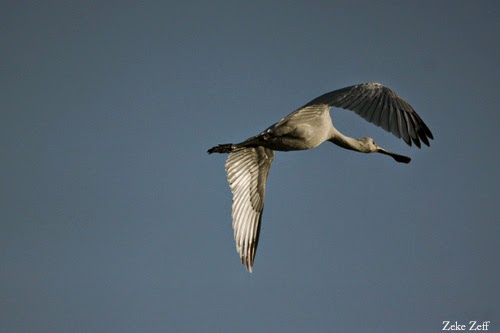All right.
The fishponds aren't just at Ma'agan Michael, which is a kibbutz on the coast midway between Netanya and Haifa; they stretch north for kilometers. On maps the coast looks like a net, full of blue holes.
On the ground at Ma'agan Michael it looked a bit more solid. It supported plenty of tour buses, anyway. The area is not a tourist destination and I saw no groups walking around. I weaved around the buses towards the gray herons. A car stopped.
"Do you know how you can drive onto the beach?"
I had seen a bike pass on dirt roads beyond the fishpond, but didn't know how to get down to the shoreline. "I'm sorry, I don't know."
"You speak English?" the driver asked in English.
"I speak Hebrew, but I don't know how to get to the beach", I said quickly in Hebrew.
"It would be better if you knew how to get to the beach and didn't speak Hebrew," he said in English.
After he drove on, I turned back to a heron below the banks of a pond, which had speared a fish and was holding it proudly.
 |
| Gray heron |
"What's at the end?" A father and son, in dati clothing, were walking in the same direction as I was.
"I'm sorry, I don't know. I have no idea." But I kept walking. In the end, the path followed a stream down to a beach with a conspicuous lack of No Camping signs.
 It was late in the day. The dunes and wildflowers already glowed orange. I found a pass between dunes as the sun set through the beachgrass and slept in the sand. I tried literally sleeping in the sand, which was a good insulator, but a cold wind blew over the beach and you can't really burrow into the sand.
It was late in the day. The dunes and wildflowers already glowed orange. I found a pass between dunes as the sun set through the beachgrass and slept in the sand. I tried literally sleeping in the sand, which was a good insulator, but a cold wind blew over the beach and you can't really burrow into the sand. Dawn glowed orange over Zikhron Ya'aqov and Fureidis. It was light enough that I had no trouble seeing the sand dunes, soft and brown in the early morning. A few birds called, but otherwise the beach was peaceful and BAM.
What could possibly improve the morning more than random explosions to the northeast?
I walked in the other direction, back towards the stream, which rippled over the sand where it met the sea. Farther upstream, kingfishers staked out a shady pool. Even farther, egrets stalked the stream and ibises flapped around the fishponds. I walked around the dunes before heading out past the fishponds, long lens ready for birds. A family on bikes stopped by me. Actually, they stopped around me. I wasn't really surrounded but I couldn't see all of them at once.
"What kinds of birds are around here?"
 |
| (שלדג (יש אחד שם! עכשיו אף...לא, הינה הוא |
 |
| לבנית |
 |
| אנפה |
 |
| ועוד שאני לא יודע את שמם |
It was a long walk to the bus stop.






